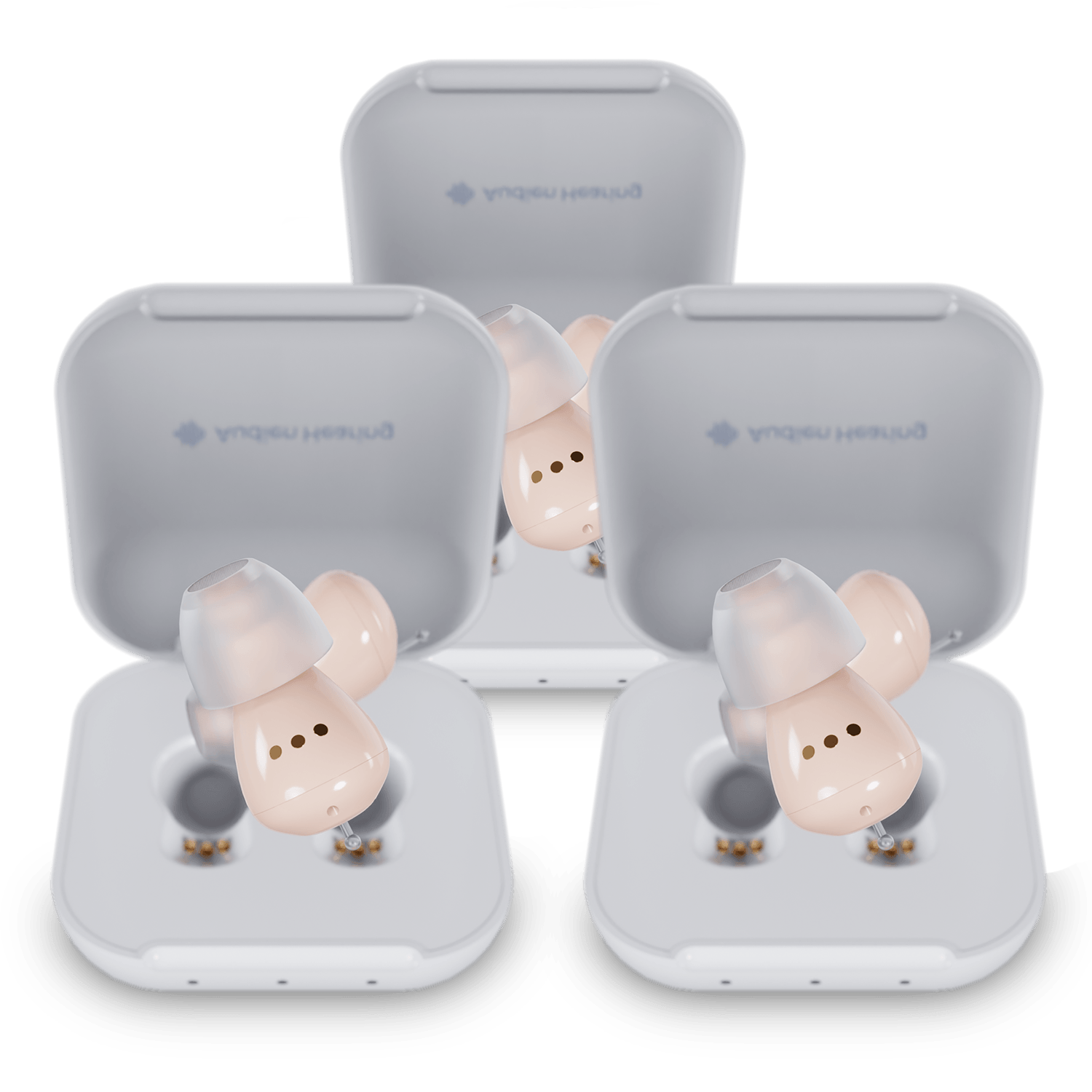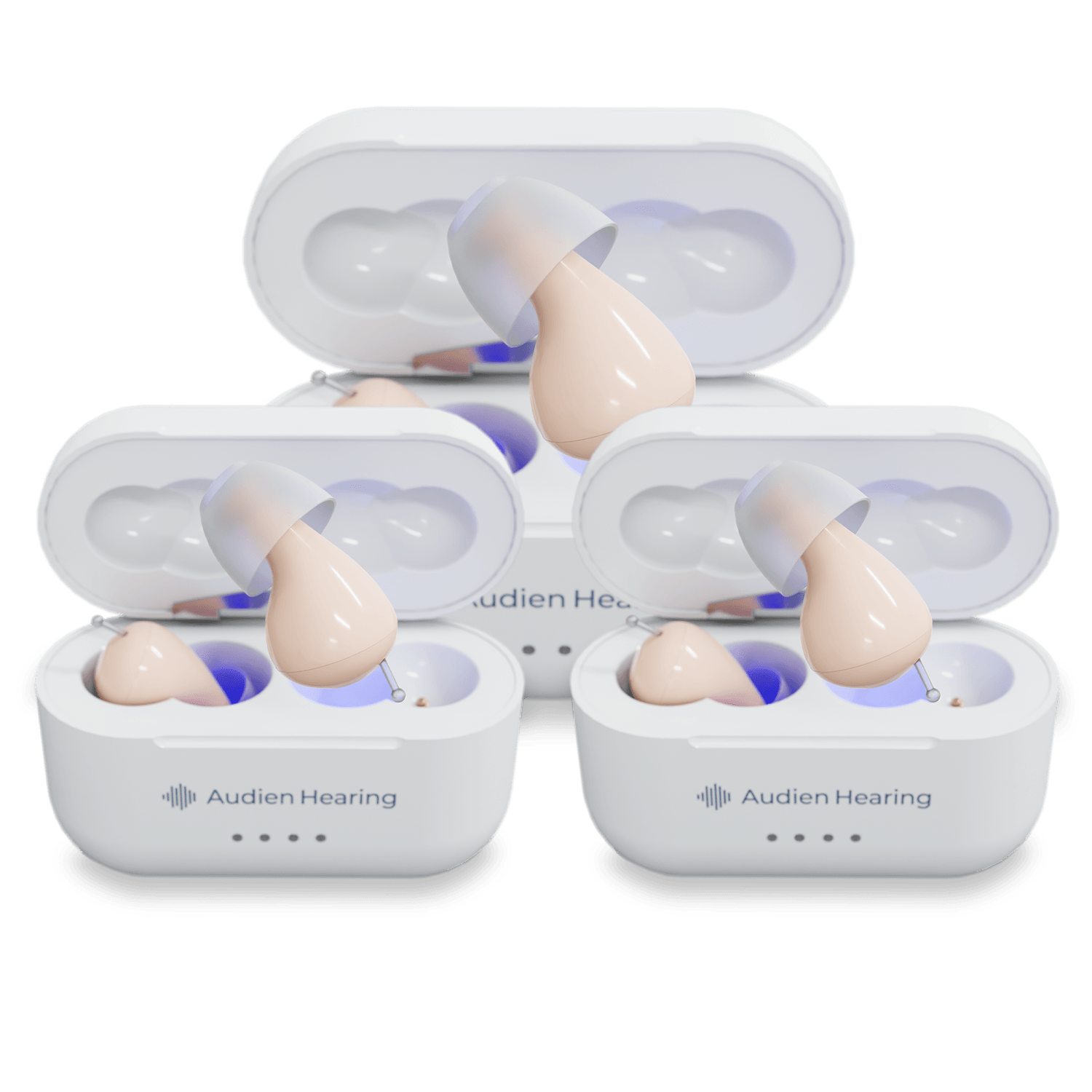Hearing loss is a common condition, and its prevalence increases with age. Many people go a large part of their life without ever thinking about hearing aids, but when it comes time to get a pair, they can feel lost.
Perhaps after your hearing test, your audiologist gives you feedback that you would benefit from hearing aids. There are hundreds of options when it comes to hearing aids, and there are many that have unique features and technology that could be beneficial to you or superfluous. Tack on the often exorbitant price points of some hearing aids, and it can become quite confusing as to what exactly you need.
One of the best ways to be a smarter consumer is to better understand the product you are shopping for. Below is a closer look at how hearing aids work, the different kinds of hearing aids, features you could find in hearing aids, and just about everything you’d ever want to know about these small hearing assistive devices.
Components of a Hearing Aid

Hearing aids have changed tremendously since they were first invented. The device to help those with hearing difficulty was the ear horn.
The ear horn was essentially a large cone that would help to funnel more sound into the ear. These devices were large, bulky, and quite impractical. Just imagine having to bring an ear horn roughly the size of a traffic cone everywhere you went.
Today hearing aids are small, efficient, and able to amplify sounds much better than the ear horns of the past.
Depending on your lifestyle, personal preference, and the different listening environments you frequent, the best product may vary. Below is a more detailed look at how hearing aids work and the key components that allow them to help those with hearing loss.
Microphone
The first component to look at with a hearing aid is the microphone. A microphone is an electrical component that is able to convert the vibrational energy of sound into an electrical signal.
Microphones at one time were quite bulky, but modern-day microphones can be smaller than a dime and still have a high enough sensitivity to get good quality audio.
Amp
The next component of this hearing device can be thought of as the brains of the operation — the amp. An amp, also known as an amplifier, increases the power of the signal received by the mic.
Amps in hearing aids may also have additional functions such as voice isolation and noise cancellation from the background noise. These features are achievable by a slight manipulation of signals coming from the microphone, and it can make it much easier for the user to understand what is being said in noisy environments.
Speaker
With an amplified digital signal, the next step is to translate it back into a medium that the ears are able to utilize to perceive sound. Standard types of hearing aids rely on a speaker to do this. A speaker consists of a diaphragm and magnets.
When an electrical impulse is sent through it, the current causes the diaphragm to move, resulting in sound. Since the signal is just an amplified version of the mic's picked up, the speaker will output the same sounds but at a higher volume.
Hearing Loss
The ears are complex. One of the best ways to understand hearing loss is to take a closer look at the ear's two main functions: the conduction of sound and the sensing of sound.
Conductive Pathway
The conduction of sound refers to the ear’s ability to translate the differentials in air pressure from sound waves into physical movement. The parts of the ear that help in conduction include the ear canal, the eardrum, and the middle ear bones.
The ear canal funnels sound to the thin membrane known as the eardrum. There are tiny bones that connect the eardrum to the sensory organ of the ear. When the eardrum moves, it also moves those tiny bones.
A problem with any step in this pathway can contribute to a form of hearing loss known as conductive hearing loss. Many causes of conductive hearing loss can be remedied, such as an earwax blockage.
Sound Sensation
The sensory aspect of hearing has to do with the conversion of physical movement into a neural impulse. The main component that deals with this aspect of hearing is known as the cochlea.
The cochlea is a hollow snail-shaped structure that contains a bunch of sensory hairs that are finely tuned to a specific frequency. When the little bones of the ear strike the cochlea, it sends a vibration through the hollow structure and activates a corresponding hair. That hair bends, starting a nerve impulse carried out of the ear by the auditory nerve. The vibrations are then processed in the auditory centers of the brain.
Hearing loss that is associated with the cochlea, auditory nerve, or brain is considered to be sensorineural hearing loss. These forms of severe hearing loss tend to be irreversible.
Sensorineural hearing loss can occur from age or exposure to loud noises that wear out the hair cells within the cochlea. Essentially the cochlea becomes less sensitive. As a result, a higher level of sound and energy is needed to allow the ear to sense the sound.
How Do Hearing Aids Help the Hearing Impaired?

You now understand how a standard hearing aid works and the two types of hearing loss, but how exactly do hearing aids help the hearing impaired? Below is a closer look at how exactly hearing aids help and why they are the most utilized tool when it comes to hearing loss.
Increased Volume
The first and perhaps most obvious way in which hearing aids help those with hearing loss is that it increases the volume of sounds that are entering the ear. Hearing aids are placed around the entrance of the ear because the microphone is able to pick up the noises that the ear would normally be receiving and increase the intensity.
When people talk about hearing loss, they typically will discuss it in terms of degrees of hearing loss, but all this is essentially looking at is the lowest perceivable sound that an individual is able to hear. The higher the degree of hearing loss, the louder a sound must be for them to be able to hear it.
The sounds that a person is able to hear are known as their hearing threshold. All a hearing aid does is make sounds outside of their hearing threshold and amplify them to where they are within it and can be heard.
Sound Quality Enhancement
Beyond just mere amplification of sounds to the ear, hearing aids can also help those with hearing loss by slightly tweaking the sounds that enter the ear. One scenario that challenges many with hearing loss is trying to understand what is being said in a listener's environment when it is loud and noisy.
With pure amplification hearing aids, there is no form of discrimination between someone’s voice and competing noises. So, people with hearing loss may still have difficulty with speech understanding in a chaotic environment.
By slightly tweaking the sound signals coming in from the microphone, some hearing aids can provide a clearer sound and allow for voices to come through more clearly than other competing noises. Some examples of hearing aids with enhanced and crisp audio are the Audien EV3 and Audien Atom.
Bone Conducting Hearing Aids
Behind-the-ear, in-ear, and invisible hearing aids are all forms of hearing aids, but functionally, they all work in the same manner. They all have microphones, amplifiers, and speakers to help individuals hear.
All of these hearing aids utilize air as a medium. But, what happens when the wearer is unable to properly conduct sound waves to the inner ear?
This is where bone conducting hearing aids come in. They are quite similar to normal hearing aids, but rather than outputting the signal from the amp to a speaker, it is outputted to a device known as an oscillator. When electricity passes through an oscillator, it vibrates. This is the basis for a bone conducting hearing aid.
The oscillator is either placed on the bone behind the ear with a headband. Or still, a surgical implant is placed into the bone where the oscillator can be attached. By sending sound vibrations to the bone near the ear, the inner ear is able to vibrate and sense the sounds.
This entire system cuts out the need for the conductive parts of the ear and can allow people who may not benefit from traditional hearing aids an opportunity to hear more.
Better Hearing and Greater Comfort
Hearing aids are quite simple in the way they operate. By converting sound into an electrical signal, amplifying that signal, and outputting it to a speaker, people are able to have an easier time hearing things.
While hearing aids are quite simple in their construction, many companies seem to charge an arm and a leg for something that should cost a fraction of what is being charged. This is where Audien comes in.
Audien is a company dedicated to providing high-quality hearing aids at a reasonable price point that won’t break the bank. With a number of different options to choose from, you can find a hearing aid that best fits into your life and budget.
Sources
Conductive Hearing Loss | ASHA
Sensorineural Hearing Loss | ASHA
Inquiring Ears Want to Know: A Fact Sheet About Your Hearing Test | CDC













